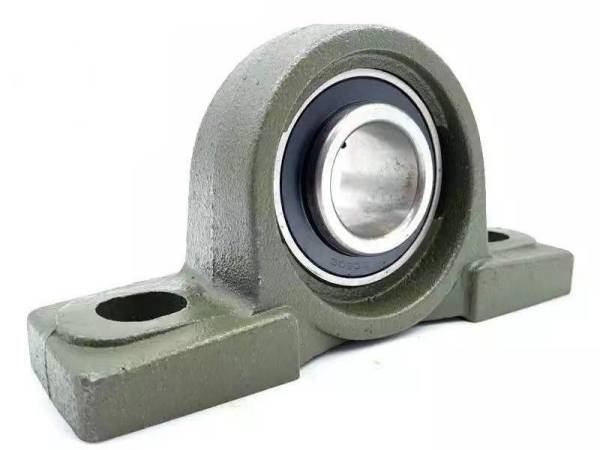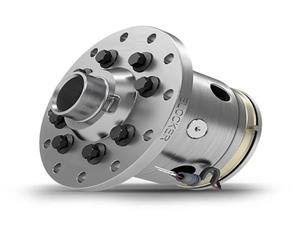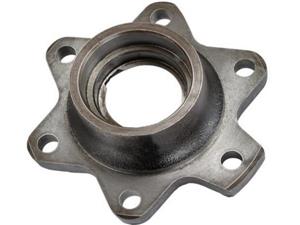How to Choose Bearing Housing Correctly, Sharing the Advantages and Disadvantages of 5 Common Bearing Housing
In the equipment we come into contact with daily, the bearing housing is a small component, but it plays a "key role". If you choose the right one, it will run smoothly and require less maintenance; if you choose the wrong one, it will not only affect the performance of the whole machine, but may even cause early failure. Below, combined with the experience of our front-line engineers, we will talk to you about the actual performance of five common bearing housings, hoping to give you a reminder when choosing.
Split bearing housing: suitable for large equipment, easy maintenance, but high environmental requirements.
The biggest advantage of the split bearing housing is its detachable structure. The top cover and the base can be separated, which is very convenient for large shaft systems. The entire shaft can be repaired or the bearing can be replaced without removing it. We often recommend this structure on some large equipment in metallurgy and building materials. But it is more picky about the use environment. If there is too much moisture or dust, the inside of the bearing housing is easily contaminated, affecting its life. In addition, its installation and matching accuracy cannot be fooled casually, especially the concentricity, which requires quite high. In short, it is easy to use but not rough.
Sliding bearing housing: high load resistance and good shock absorption, but lubrication must be emphasized.
Sliding bearing housing is an old-fashioned but practical choice, especially suitable for high load and high speed conditions. When dealing with some heavy-duty fans or metallurgical equipment in Fuding, we still often choose it. The advantage is that it has strong load-bearing capacity, and because it is a sliding contact, it can absorb a lot of vibration itself, and the sound is low during operation. But the disadvantage is also obvious: it must have stable lubrication, otherwise it is easy to wear or even stick the shaft. Compared with rolling bearings, it is less efficient, so we generally only use it in places where efficiency requirements are not high but stability requirements are high.
Rolling bearing housing: high efficiency and high precision, but afraid of dirt and misalignment.
Rolling bearing housing is the one we come into contact with most in daily life. It has balls or rollers inside, low friction, high speed, and is suitable for most modern mechanical equipment. For example, machine tools, motors, water pumps, etc., we basically have rolling bearing housing as standard. Its advantages are high operating efficiency, long maintenance intervals, and high precision. But it also has shortcomings, that is, it is afraid of water, dust, and you are afraid of installing it sideways. Especially when the on-site environment is not very good, if the seal is not in place, some dirt will soon go in and cause problems. Therefore, when we choose this type of bearing housing in Fuding, we often match it with protective covers and oil seals, and even recommend customers to perform regular maintenance to avoid small problems from becoming big failures.

Bearing housing with flange: compact structure and easy installation, but the processing accuracy cannot be sloppy.
Bearing housingwith flange can be understood as a version with "self-contained positioning holes". We often use it in projects with limited installation space or complex on-site structures. Its flange can be directly fixed on the equipment panel, which is simple to install and can provide a larger support area. However, this type of bearing housing has relatively high requirements for processing accuracy, especially the flatness of the flange and the centering of the hole position. Otherwise, it will not only be difficult to align after installation, but may also cause unstable operation. So although it is "easy to install", the early design and processing links must not be easy.
Spherical bearing housing: flexible, easy to install, and highly adaptable, but with average precision.
Spherical bearing housing is actually a design that integrates bearings and seats. It is compact in structure and easy to install. It is suitable for some light industries, such as food processing, packaging equipment, logistics conveyor lines, etc. Common types of bearing housings are vertical, square, round, etc., and the selection is also flexible. The advantages are that it is easy to use, has low requirements on the shaft, and is highly adaptable. But it is essentially biased towards light load and low precision application scenarios, and its protection is also average, and it is easy to get dust and water. If the assembly accuracy is not enough, long-term operation may cause jitter or abnormal wear. Therefore, when we select this type of product for customers, we will also recommend matching it with a sealing structure to improve the overall stability.
Bearing housing is not about choosing one that can be used, but choosing a suitable one
Many customers will ask when they come to consult for the first time: "Is this bearing housing universal?" When our technicians hear this, their first reaction is usually: "It depends on where you use it." Bearing housings do look similar, but the design logic, applicable environment, and installation requirements behind each one are different. When selecting a bearing, the Fuding team always gives priority to the actual working conditions, such as temperature, load, lubrication conditions, and environmental pollution, and then makes a balanced choice based on the customer's budget.
If you have encountered problems such as bearing housing deviation, jamming, and short life in your project, it is likely that you did not consider it carefully during the selection stage. Feel free to contact our Fuding technical team at any time to talk to us about your working conditions. We will give practical suggestions from an engineer's perspective.




